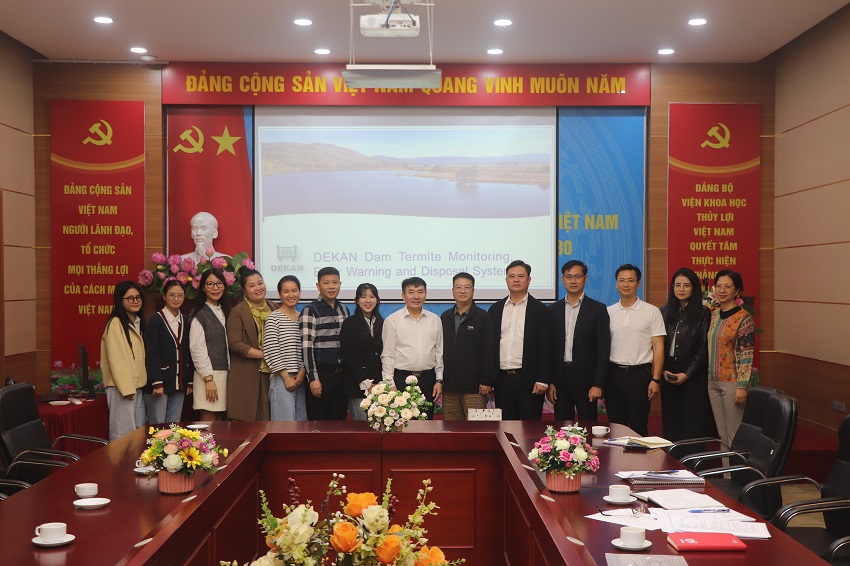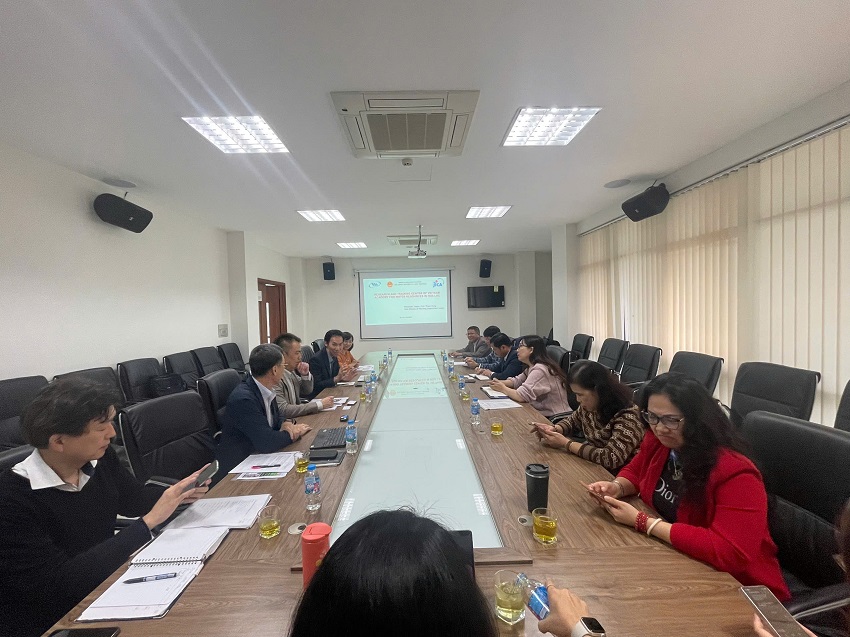Mô hình hóa mưa độ phân giải cao kết hợp giữa mô hình động lực khí tượng và phương pháp thống kê: Áp dụng cho lưu vực sông Sài Gòn - Đồng Nai
23/03/2023Mô hình hóa các trận mưa lớn đóng một vai trò quan trọng trong quản lý tài nguyên nước. Trong nghiên cứu này, phương pháp kết hợp giữa chi tiết hóa động lực học và phương pháp hiệu chỉnh thống kê đã được áp dụng. Công nghệ chi tiết hóa đề xuất sử dụng đầu vào được cung cấp từ ba bộ dữ liệu toàn cầu khác nhau bao gồm ERA-Interim, ERA20C và CFSR. Dữ liệu toàn cầu này được chi tiết hóa bằng mô hình Nghiên cứu và Dự báo Thời tiết (WRF), sau đó sư dụng phương pháp thống kê nhằm nâng cao tính chính xác cũng như hiệu quả trong công việc chi tiết hóa mưa có độ phân giải cao (9km) trên lưu vực. Kết quả tính toán mô phỏng cả 03 ba bộ dữ liệu có độ tin cậy tốt và đạt các chỉ tiêu thống kê. Việc thiết lập được hệ thống tính toán khôi phục xu thế diễn biến của các điều kiện khí tượng, thủy văn trên toàn bộ lưu vực tạo điều kiện cho các nhà nghiên cứu đánh giá tổng quát được quá trình hình thành các trận mưa lũ trong quá khứ, từ đó giúp chủ động ứng phó với tình hình thiên tai mưa lũ trên lưu vực.
1. ĐẶT VẤN ĐỀ
2. PHƯƠNG PHÁP NGHIÊN CỨU
2.1. Vùng nghiên cứu
2.2. Phương pháp nghiên cứu
3. KẾT LUẬN VÀ KIẾN NGHỊ
TÀI LIỆU THAM KHẢO
[1] Krishnamurti T.N., Jha B., Rasch P.J., et al. (1997). A high resolution global reanalysis highlighting the winter monsoon. Part I, reanalysis fields. Meteorol Atmos Phys, 64(3–4), 123–150.
[2] Compo G.P., Whitaker J.S., and Sardeshmukh P.D. (2006). Feasibility of a 100-Year Reanalysis Using Only Surface Pressure Data. Bull Am Meteorol Soc, 87(2), 175–190.
[3] Fuka D.R., Walter M.T., MacAlister C., et al. (2014). Using the Climate Forecast System Reanalysis as weather input data for watershed models. Hydrol Process, 28(22), 5613–5623.
[4] Kjellström E., Bärring L., Nikulin G., et al. (2016). Production and use of regional climate model projections – A Swedish perspective on building climate services. Clim Serv, 2–3, 15–29.
[5] Wilby R.L. and Wigley T.M.L. (1997). Downscaling general circulation model output: a review of methods and limitations. Prog Phys Geogr Earth Environ, 21(4), 530–548.
[6] Prudhomme C., Reynard N., and Crooks S. (2002). Downscaling of global climate models for flood frequency analysis: where are we now?. Hydrol Process, 16(6), 1137–1150.
[7] Fowler H.J., Blenkinsop S., and Tebaldi C. (2007). Linking climate change modelling to impacts studies: recent advances in downscaling techniques for hydrological modelling. Int J Climatol, 27(12), 1547–1578.
[8] Burlando P. and Rosso R. (2002). Effects of transient climate change on basin hydrology. 1. Precipitation scenarios for the Arno River, central Italy. Hydrol Process, 16(6), 1151–1175.
[9] Goyal M.K. and Ojha C.S.P. (2011). Evaluation of linear regression methods as downscaling tools in temperature projections over the Pichola Lake Basin in India. Hydrol Process, 25(9), 1453–1465.
[10] Hashmi M.Z., Shamseldin A.Y., and Melville B.W. (2011). Comparison of SDSM and LARS-WG for simulation and downscaling of extreme precipitation events in a watershed. Stoch Environ Res Risk Assess, 25(4), 475–484.
[11] Hashmi M.Z., Shamseldin A.Y., and Melville B.W. (2013). Statistically downscaled probabilistic multi-model ensemble projections of precipitation change in a watershed. Hydrol Process, 27(7), 1021–1032.
[12] Kure S., Jang S., Ohara N., et al. (2013). WEHY-HCM for Modeling Interactive
Atmospheric-Hydrologic Processes at Watershed Scale. II: Model Application to Ungauged and Sparsely Gauged Watersheds. J Hydrol Eng, 18(10), 1272–1281.
[13] Gebregiorgis A.S. and Hossain F. (2013). Understanding the Dependence of Satellite Rainfall Uncertainty on Topography and Climate for Hydrologic Model Simulation. IEEE Trans Geosci Remote Sens, 51(1), 704–718.
[14] Berg N., Hall A., Sun F., et al. (2015). Twenty-First-Century Precipitation Changes over the Los Angeles Region*. J Clim, 28(2), 401–421.
[15] Nguyen-Xuan T., Ngo-Duc T., Kamimera H., et al. (2016). The Vietnam Gridded Precipitation (VnGP) Dataset: Construction and Validation. SOLA, 12, 291–296.
[16] Inomata H., Takeuchi K., And Fukami K. (2011). Development Of A Statistical Bias Correction Method For Daily Precipitation Data Of Gcm20. J Japan Soc Civ Eng Ser B1 (Hydraulic Eng, 67(4), I_247-I_252.
[17] Trinh, T., Ishida, K., Fischer, I., Jang, S., Darama, Y., Nosacka, J., Brown, K. and Kavvas, M.L., 2016. New methodology to develop future flood frequency under changing climate by means of physically based numerical atmospheric-hydrologic modeling. Journal of Hydrologic Engineering, 21(4), p.04016001.
[18] Trinh, T., Ho, C., Do, N., Ercan, A. and Kavvas, M.L., 2020. Development of high-resolution 72 h precipitation and hillslope flood maps over a tropical transboundary region by physically based numerical atmospheric–hydrologic modeling. Journal of Water and Climate Change, 11(S1), pp.387-406.
[19] Ho, C., Trinh, T., Nguyen, A., Nguyen, Q., Ercan, A. and Kavvas, M.L., 2019b.
Reconstruction and evaluation of changes in hydrologic conditions over a transboundary region by a regional climate model coupled with a physically-based hydrology model: Application to Thao river watershed. Science of the total environment, 668, pp.768-779.
[20] Jang, S., Kavvas, M.L., Ishida, K., Trinh, T., Ohara, N., Kure, S., Chen, Z.Q., Anderson, M.L., Matanga, G. and Carr, K.J., 2017. A performance evaluation of dynamical downscaling of precipitation over northern California. Sustainability, 9(8), p.1457.
________________________________________________________________________
Chi tiết bài báo xem tại đây: Mô hình hóa mưa độ phân giải cao kết hợp giữa mô hình động lực khí tượng và phương pháp thống kê: Áp dụng cho lưu vực sông Sài Gòn - Đồng Nai
Trịnh Quang Toàn
Viện Sinh thái và Bảo vệ công trình
Đỗ Hoài Nam
Trung tâm Đào tạo và Hợp tác Quốc tế
Nguyễn Kỳ Phùng
Viện Khoa học và Công nghệ Tính toán
Nguyễn Văn Thắng
Trường Đại học Quốc Gia Tp.Hồ Chí Minh
TẠP CHÍ KH&CN THỦY LỢI
Ý kiến góp ý:













